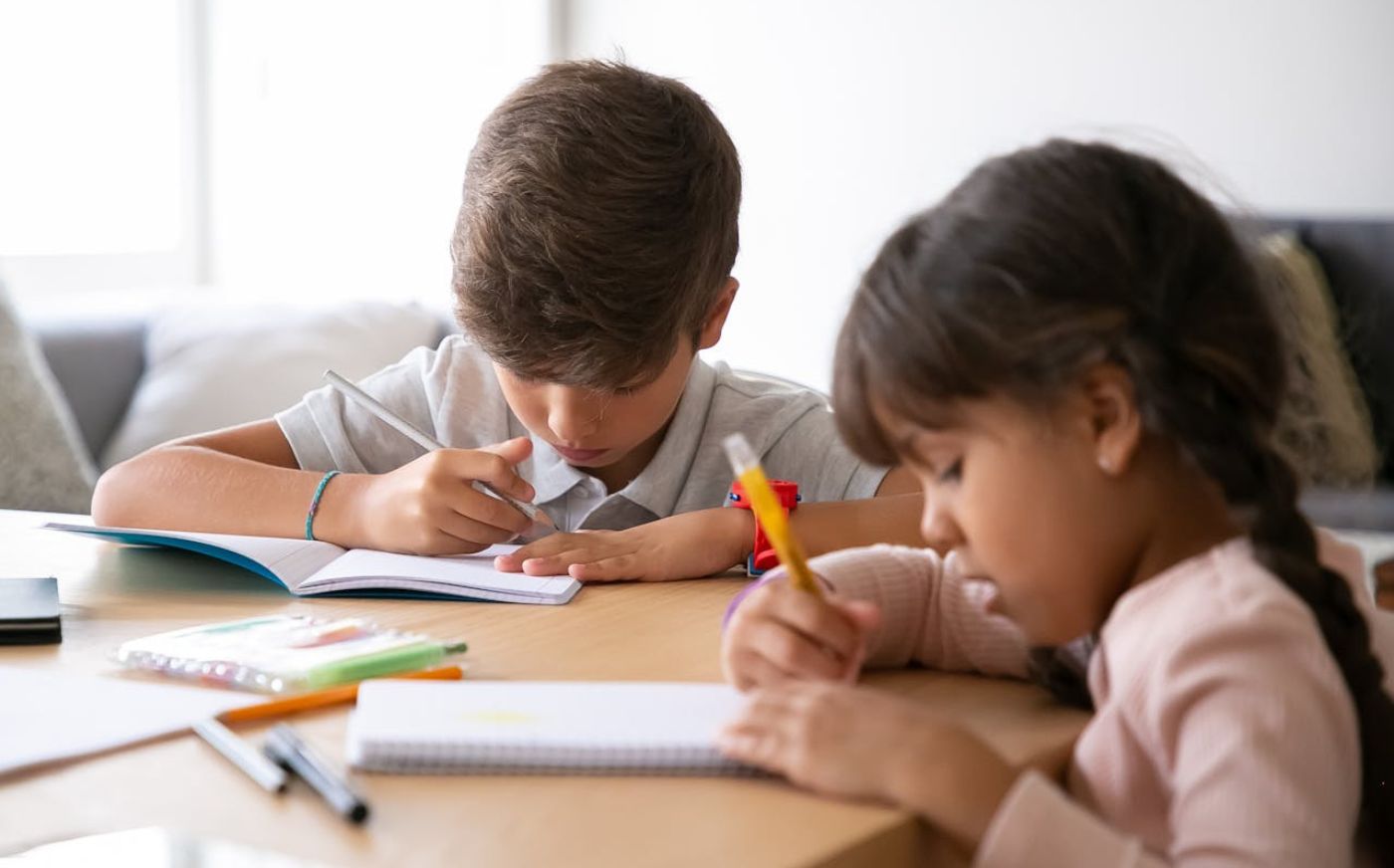Getting ready for school: A comprehensive guide for parents
Starting primary school is one of the most exciting milestones, and it marks children’s first […]
Read more
From the moment your child picks up their first mark-making tool, they are forming a connection between the movements they make and the marks they create.
These marks may initially appear to be random scribbles and lines but mark-making is a complex developmental process of learning that meaning can be assigned to shapes. Over time, more complex shapes, images and ‘letter-like’ symbols will emerge and eventually, as letter sounds are learned, these will begin to be used in the earliest forms of writing.
As parents, we can support our child’s writing journey in the home. All children will progress at their own pace and it’s important to remember that a child’s first year of primary school is when they will be taught how to write. Here, we give you helpful advice that you can try to implement at home to help your child on their unique learning journey.
Reading stories and enjoying sharing songs, nursery rhymes and poetry every day will equip your child with the language they need to power their writing journey. Try to incorporate a healthy balance of old favourites and new stories and songs!
Provide your child with fun opportunities to develop their fine and gross motor skills on a regular basis. Small-scale movement can include: squeezing sponges in water; playing with peg boards, puzzles and stacking rings; and sorting pebbles, sticks and stones found outside. Large-scale movement might look like: using a broom to sweep the floor; playing throwing and catching games; and using climbing equipment.
All children should be encouraged to make marks in a range of ways on a regular basis. Here are some ways you can do this home:
– Tape a large piece of paper to the floor or a table and provide different crayons, markers or pencils.
– Use chalk outside on the pavement or another hard surface.
– Sprinkle flour on a surface and ask your child to make marks in it with their fingers.
– Give your child a bucket of water and a paintbrush to ‘paint’ your outside walls or garden fence!
The opportunity to make marks on a vertical surface helps build strength in the shoulders and arms – using an easel or a chalkboard attached to a wall is a great way to encourage this. For older children, special notebooks and pens will make mark-making more exciting.
Do prompt your child to practice forming pre-writing shapes (anti-clockwise circles, straight lines, zig zags and wavy lines). They won’t be mastered right away but these shapes can be modelled and encouraged with children as young as one year old.
Turn it into a fun challenge: “Can you draw a straight line that’s even longer than mine?” or “Let’s see who can draw the most anti-clockwise circles in one minute.”
Model writing in front of your child and talk about what you’re doing: “I’m just writing down a list of things we need to pick up at the shop” or “I’m going to write a birthday card for Granny, what do you think I should say?”. Talk aloud as you write to build an understanding that each written word corresponds to a spoken one and let your child have a go too.
Children will become confident mark makers and assign meaning to their marks if they are given lots of encouragement and praise. Encourage your child to talk about what they have written. Some children won’t offer an answer immediately and may appear unsure. In this case, you can always hazard a guess, giving them the option to agree, or correct you!
Model this too: when you are writing, you can talk to your child about what letters you are forming, and also sound them out.
Sitting down to worksheets or forcing a child to pick up a pencil when they aren’t interested can be very off-putting and affect their attitude towards writing later down the line. Make it fun and exciting and don’t worry if they’re not interested yet, there’s plenty of time.
Likewise, don’t push handwriting too early – this can result in poor letter formation habits that are very hard to break.
As with all childhood milestones, each child will progress at their own pace. If at nursery, your child’s key person will support their writing journey. If they have any concerns, they will always share them with you if you would like to know more.